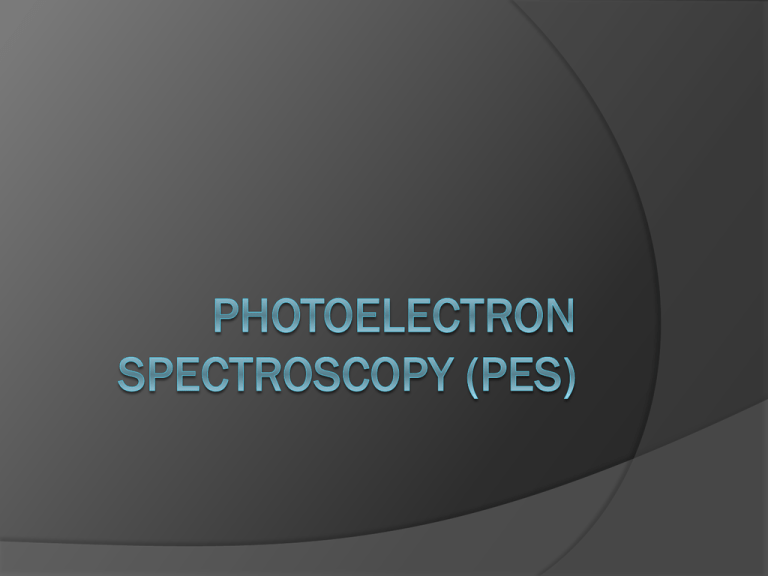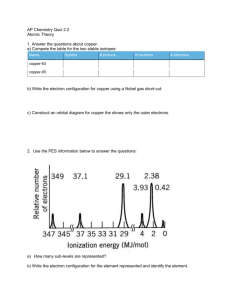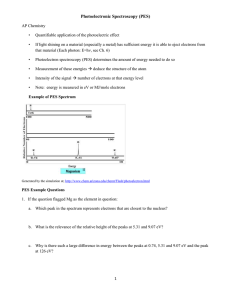Photoelectron Spectroscopy (PES) Explained for AP Chemistry
advertisement

This is new material for the AP test this year It is not in your book It is not in most books It is a good bet there will be a couple of multiple choice questions on this material Ionization energy The energy required to remove an electron. It is easiest to remove electrons from the valence shell. As we move closer, it becomes more difficult. However, removing electrons makes the atom more positive. Therefore that impacts the data. What would the ionization energy be if we didn’t first remove valence electrons? Ionizing vs. Nonionizing Radiation Ultraviolet, x-rays, and gamma is ionizing. Generally, anything of lower energy is nonionizing High energy photons are absorbed by atoms. Normally this excites the atom, gets the electrons to jump up. If they jump high enough, they will reach escape velocity, they will be going so fast the electromagnetic pull from the nucleus won’t be enough to pull them back. Photoelecton Spectroscopy PES begins by shooting at atom with a high energy photon (normally UV or x-ray) that is absorbed by the atom. An electron is ejected carrying off the excess energy. The ejected electron is measured in a detector. The energy of the photon absorbed (h), will be equal to the ionization energy (IE) + kinetic energy (KE) of the electron. Therefore IE = h - KE PES Data from PES We find that all electrons in a given shell require the same energy to remove them. That is to say all electrons in the 1s require the same energy to remove, and all in the 2s, and 2p are the same, however, the energy to remove the 2p is different than the 1 s. This is different from the previous determinations of ionization energy, with IE1, IE2, IE3 etc. Plotting the data The data from PES experiments is plotted as peeks. The height of the peeks is proportional to the number of electrons of equivalent energy ejected during the experiment. In other words, the height is related to the number of electrons in that energy level. Peeks 1s 2s 1s











